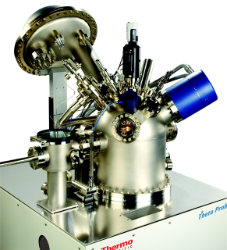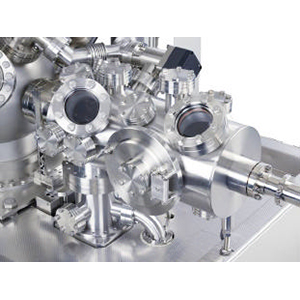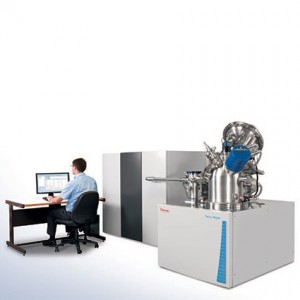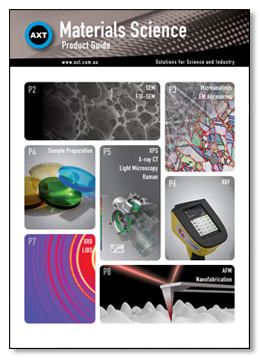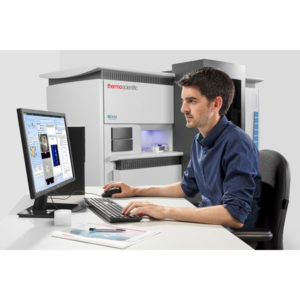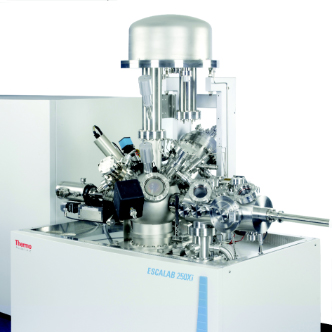Theta Probe Angle Resolved X-Ray Photoelectron Spectroscopy (ARXPS)
The Theta Probe from Thermo Scientific is designed for the analysis and characterisation of ultra-thin films. It enables the user to collect angle-resolved x-ray photoelectron spectroscopy (ARXPS) spectra without the need to tilt the sample. This allows non-destructive characterisation of ultra-thin layers and is suited a vast range of different materials.
This instrument is ideally suited to analysing the near surface region (top few nanometers) of materials, which is of critical importance to many applications, as knowledge of the surface chemistry is paramount to the materials success. The Theta Probe comes into its own in these applications using parallel angle resolved XPS (PARXPS). Combined with Thermo Scientifics Advantage Data System software package, the overall system becomes a formidable instrument that is simple and intuitive to use and is easily capable of providing precise and accurate characterisations.
Why Use PARXPS?
PARXPS is able to non-destructively resolve:
- The sequence of layers in an ultra-thin film
- Thickness of the layers, including buried layers
- The concentration depth profile through the layers
- Uniformity of thickness, composition and distribution of material within the layers
Advantages of PARXPS
APRXPS is the ideal technique for analysing thin films. Benefits of the technique include:
- Suitable for small areas, large samples and within images and depth profiles
- PARXPS is faster than the traditional method involving sample tilting
- The analysis area remains constant, independent of electron emission angle
- The energy resolution is constant over all angles because the whole of the X-ray spot is within the field of view of the spectrometer
Small Area Spectroscopy
The Theta Probe incorporates a microfocussing monochromators for source defined SAXPS and is as simple to use as large area XPS. It features maximum sensitivity and selectable spot size from 15 to 400µm. This system allows the easy acquisition of chemical state images of the surface.
In conjunction with PARXPS, it creates images of chemical distributions in ultra-thin films.
Depth Profiling
The system includes a digitally-controlled EX05 ion gun can be used to provide depth profiles even when using low energy ions. An azimuthal sample rotation available for depth profiling.
Software
Thermo Scientifics Advantage Data System allows the user to generate the maximum amount of information from a data set. It is able to control the entire system from sample to data processing, as well as managing data from all aspects of the analysis. In addition it allows the system to operate unattended, processing multiple samples without user intervention.
Key Features
Key features of the Thermo Scientific Theta Probe include:
- Parallel ARXPS for ultra-thin film measurements without tilting
- Small spot X-ray source for small feature analysis
- Chemical state imaging
- Overhead sample alignment with co-axial and off-axial lighting
- Large sample handling
- Ion source for depth profiling
- Fully featured Thermo Scientific Avantage software for instrument control, data acquisition, data processing and reporting
- Automated 5-axis stage for precise sample manipulation
Applications
The Theta Probe is a versatile XPS system suited many different applications. Some include:
- Monlayers and self-assembled monolayers
- Graphene-based electronics
- Semiconductors including high-k dielectrics
- Surface modified polymers
- Medical devices
- Characterisation of ultra-thin films without sputtering
- Characterisation of chemical gradients and immobilised antibodies
- Distribution of materials within a layer
- Characterisation of silicon oxide and oxynitride layers

